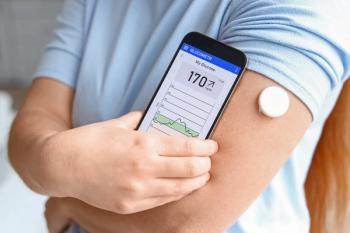
5 New FDA Approvals to Know from September 2017
Learn about the new products and expanded indications approved by the FDA in September 2017.
Learn about the new products and expanded indications approved by the FDA in September 2017.
1.
The FDA approved Neos Therapeutics’ extended-release amphetamine oral suspension (Adzenys ER) on September 15, 2017.1
Adzenys ER is indicated for the treatment of attention-deficit hyperactivity disorder (ADHD) in patients aged 6 years and older. It is the third Neos product to receive the FDA’s nod for this purpose, following the manufacturer’s Adzenys XR-ODT and Cotempla XR-ODT.
The drug, formerly referred to as NT-0201, is a once-daily liquid medication that does not require refrigeration or reconstitution at the pharmacy level. It and Adzenys XR-ODT are considered bioequivalent to Adderall XR.
Neos plans to launch Adzenys ER in the United States in early 2018.
2.
The FDA approved Novo Nordisk’s fast-acting insulin aspart (Fiasp) on September 29, 2017.2
Fiasp is indicated for the improvement of glycemic control in adults with diabetes. The drug was developed to more closely match the physiological insulin mealtime response of an individual with diabetes, with the manufacturers adding vitamin B3 (niacinamide) to increase the speed of absorption and a naturally occurring amino acid (L-Arginine) for stability.
Adverse events associated with the use of Fiasp include hypoglycemia, allergic reactions, hypersensitivity, injection site reactions, lipodystrophy, and weight gain.
3.
The FDA approved Abbot Diabetes Care’s FreeStyle Libre Flash Glucose Monitoring System on September 27, 2017.3
The device is the first continuous glucose monitoring system for adult patients that reduces the need for fingerstick testing. Instead, a small sensor wire inserted below the skin’s surface continuously monitors glucose; patients can then wave a mobile reader above the sensor wire to measure glucose levels and how they are changing.
The FDA warned that use of the device carries a risk of hypoglycemia or hyperglycemia in cases where inaccurate information is provided. They also noted that the system does not provide real-time alerts in the absence of user-initiated action and cannot alert users to low blood glucose levels when they are asleep.
The FDA approved GlaxoSmithKline and Innoviva’s fluticasone furoate/umeclidinium/vilanterol inhaler (Trelegy Ellipta) on September 18, 2017.4
Trelegy Ellipta is indicated for the maintenance treatment of patients with chronic obstructive pulmonary disease (COPD) who are on a fixed-dose combination of fluticasone furoate and vilanterol for airflow obstruction. The drug—a combination of an inhaled corticosteroid, a long-acting muscarinic antagonist, and a long-acting beta2-adrenergic agonist—is the first once-daily COPD treatment that combines 3 active molecules in a single inhaler to receive the FDA’s nod.
The most common adverse events reported by trial participants treated with Trelegy Ellipta include headache, back pain, dysgeusia, diarrhea, cough, oropharyngeal pain, and gastroenteritis.
5.
The FDA approved Eli Lilly’s abemaciclib (Verzenio) on September 28, 2017.5
Verzenio is indicated for the treatment of adults with hormone receptor (HR)-positive, human epidermal growth factor receptor 2 (HER2)-negative advanced or metastatic breast cancer that has progressed after endocrine therapy. The drug is generally to be given in combination with fulvestrant, though it can also be given as a stand-alone therapy if patients were previously treated with endocrine therapy and chemotherapy after the cancer had spread.
Adverse effects associated with the use of Verzenio include diarrhea, low levels of certain white blood cells, nausea, abdominal pain, infections, fatigue, low levels of red blood cells, decreased appetite, vomiting, and headache.
References
- Neos Therapeutics Receives U.S. FDA Approval of Adzenys ER (amphetamine) Extended-Release Oral Suspension for the Treatment of ADHD in Patients 6 Years and Older (news release). Dallas, TX. http://investors.neostx.com/phoenix.zhtml?c=254075&p=RssLanding&cat=news&id=2301045. Accessed September 15, 2017.
- Novo Nordisk’s new fast-acting mealtime insulin Fiasp approved in the US [company announcement]. Denmark. http://hugin.info/2013/R/2138112/818474.pdf. Accessed September 29, 2017.
- FDA approves first continuous glucose monitoring system for adults not requiring blood sample calibration [news release]. FDA’s website. https://www.fda.gov/NewsEvents/Newsroom/PressAnnouncements/ucm577890.htm. Accessed September 27, 2017.
- Trelegy Ellipta approved as the first once-daily single inhaler triple therapy for the treatment of appropriate patients with COPD in the US [news release]. GSK’s website. https://www.gsk.com/en-gb/media/press-releases/trelegy-ellipta-approved-as-the-first-once-daily-single-inhaler-triple-therapy-for-the-treatment-of-appropriate-patients-with-copd-in-the-us. Accessed September 19, 2017.
- FDA approves new treatment for certain advanced or metastatic breast cancers [news release]. FDA’s website. https://www.fda.gov/NewsEvents/Newsroom/PressAnnouncements/ucm578071.htm. Accessed September 28, 2017.
Newsletter
Stay informed on drug updates, treatment guidelines, and pharmacy practice trends—subscribe to Pharmacy Times for weekly clinical insights.
















































































































































































































